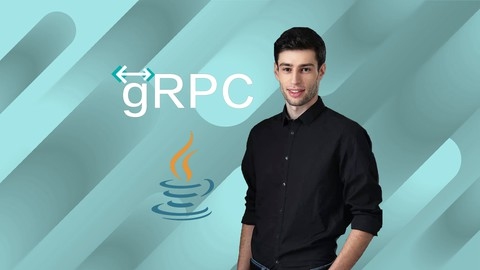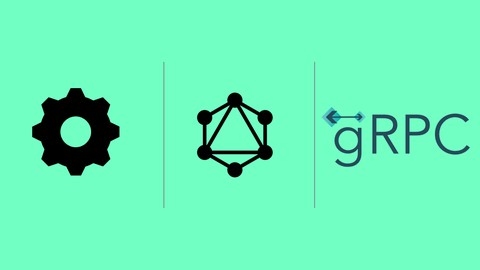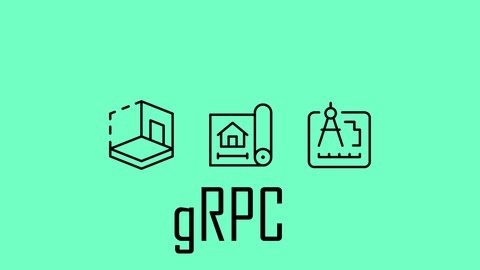gRPC is a modern, high-performance Remote Procedure Call (RPC) framework that’s revolutionizing API and microservice development.
By utilizing HTTP/2 and Protocol Buffers, gRPC enables efficient, secure, and scalable communication between services.
Learning gRPC empowers you to build robust, performant APIs and microservices that can handle demanding workloads.
Finding the ideal gRPC course on Udemy can feel overwhelming, with countless options available.
You want a course that goes beyond theory, providing practical experience and hands-on projects to solidify your understanding of this powerful technology.
We’ve carefully reviewed numerous Udemy courses and have identified gRPC Golang Master Class: Build Modern API & Microservices as the best overall course.
This comprehensive program provides a deep dive into gRPC fundamentals, covering everything from Protocol Buffers to advanced features like error handling and deadlines.
The course includes hands-on projects that allow you to build real-world gRPC applications using Golang.
This is just the beginning of our exploration of the best gRPC courses on Udemy.
Keep reading to discover other great options, tailored to different programming languages, learning styles, and career goals.
gRPC [Golang] Master Class: Build Modern API & Microservices
Starting with an introduction to gRPC, the course quickly moves to explain its significance in API and microservices development.
You’ll learn about the advantages of Protocol Buffers, HTTP/2, and how gRPC ensures efficient, scalable, and secure communication over REST.
Setting up your development environment is made easy with step-by-step instructions on using Golang, VSCode, and Protoc.
The course then transitions into practical, hands-on learning.
You’ll implement unary, server streaming, client streaming, and bi-directional streaming APIs through exercises like Sum API, Primes API, Avg API, and Max API, with solutions to guide your learning process.
Advanced features of gRPC, such as error handling, deadlines, SSL security, and the use of gRPC reflection & Evans CLI, are covered in detail.
Additionally, you’ll gain experience creating a CRUD API with MongoDB, from Docker setup to executing CRUD operations.
By the end of this course, you’ll have a solid understanding of gRPC and the skills to build modern, efficient APIs and microservices using Golang.
Backend Master Class [Golang + Postgres + Kubernetes + gRPC]
You’ll start by learning how to design a PostgreSQL database schema and generate SQL code using dbdiagram.io.
The course guides you through setting up a development environment on Windows (with WSL2) or MacOS, complete with Go, Visual Studio Code, Docker, and other essential tools.
Next, you’ll dive into working with databases in Golang.
You’ll learn to write database migrations, generate CRUD code from SQL using sqlc, write unit tests with random data, implement transactions, handle deadlocks, and understand transaction isolation levels.
The course even covers setting up GitHub Actions for automated testing.
Moving on, you’ll build a RESTful HTTP JSON API using Gin, implementing features like config loading, mocking for testing, custom validators, authentication with PASETO (a more secure alternative to JWT), and authorization middleware.
The deployment section is equally comprehensive, covering Docker image optimization, docker-compose for local development, pushing images to AWS ECR using GitHub Actions, setting up an AWS RDS database, and storing secrets with AWS Secrets Manager.
You’ll learn to create an EKS cluster on AWS, deploy your application using Kubernetes, configure Ingress for traffic routing, automate TLS certificate management with cert-manager, and enable automatic deployments via GitHub Actions.
The course doesn’t stop there!
It dives into advanced topics like managing user sessions with refresh tokens, generating database documentation from DBML, and an in-depth exploration of gRPC.
You’ll learn to define gRPC APIs with Protocol Buffers, implement gRPC services in Go, serve both gRPC and HTTP requests via gRPC Gateway, extract metadata, generate Swagger documentation, embed static files, validate parameters, run database migrations from code, handle partial updates, add authorization, and write structured logs.
Finally, you’ll learn about asynchronous processing with background workers using Asynq and Redis.
This includes integrating workers with your Go web server, sending tasks within transactions, handling errors and logs, implementing email verification, and unit testing gRPC APIs with mocks.
The course wraps up by improving server stability and security, covering topics like upgrading sqlc syntax, switching to the pgx database driver, handling pgx errors, configuring Docker Compose, installing binary packages, implementing role-based access control (RBAC), granting AWS permissions, graceful shutdown, and more.
gRPC [Java] Master Class: Build Modern API & Micro services
You’ll start by delving into the foundational concepts of gRPC, understanding how it operates beneath the surface.
You’ll learn about Protocol Buffers, a powerful tool for defining data structures compatible with diverse programming languages.
The course also explores HTTP/2, the underlying protocol that powers gRPC communication.
You’ll then be introduced to the various types of gRPC APIs, including unary, server streaming, client streaming, and bidirectional streaming.
You’ll learn the practical implementation of each type through hands-on projects.
Get ready to dive into a real-world scenario using Java and Gradle to set up a gRPC project and create a simple “Greet” service.
You’ll then progress to more complex scenarios, such as server streaming where the server can send multiple responses to a single request, and client streaming where the client can send multiple requests to a single server endpoint.
The course further equips you with advanced features like error handling, deadlines, and SSL security, enhancing the robustness of your gRPC services.
You’ll also get valuable experience with practical exercises, including the creation of a CRUD API using MongoDB.
Learn how to set up Docker and Docker-Compose to manage your application’s environment effectively.
gRPC Masterclass with Java & Spring Boot [2024 - Hands-On]
This gRPC Masterclass with Java & Spring Boot provides a comprehensive journey into the world of gRPC, equipping you with the skills to build robust and efficient microservices.
The course delves deep into Protocol Buffers, the foundation of gRPC, guiding you through the intricacies of defining data structures.
You’ll learn to master scalar types, collections, enums, and more, creating a solid foundation for building your gRPC services.
Moving beyond the basics, the course thoroughly explores the diverse gRPC communication patterns, including unary, server streaming, client streaming, and bidirectional streaming.
You’ll gain practical experience implementing these patterns in Java using Spring Boot, allowing you to tackle real-world challenges with confidence.
The course doesn’t shy away from essential concepts like error handling, deadline management, and load balancing.
You’ll be equipped to build reliable and scalable gRPC services, addressing potential issues before they arise.
The real power of this course lies in its exploration of advanced topics such as interceptors, call options, metadata, and context.
These tools empower you to customize your gRPC services with features like security, logging, and sophisticated control over communication.
You’ll learn how to seamlessly integrate gRPC with Spring Boot, constructing full-fledged applications that incorporate real-world features like user authentication, trading, and price updates.
Throughout the course, you’ll encounter practical examples and code exercises, solidifying your understanding of gRPC principles.
You’ll also become proficient in using tools like Postman and Docker to test, deploy, and manage your gRPC applications effectively.
This gRPC Masterclass provides a comprehensive and hands-on approach to mastering gRPC, equipping you with the skills to design, build, and deploy sophisticated gRPC services.
gRPC [C#] Master Class: Build Modern API & Microservices
This gRPC course offers a comprehensive and practical introduction to building modern APIs and microservices.
You’ll dive deep into the fundamentals, exploring the internal workings of gRPC, including Protocol Buffers, HTTP/2, and its four core API types: Unary, Server Streaming, Client Streaming, and Bi-Directional Streaming.
The hands-on approach is a highlight.
You’ll set up your development environment, create your first gRPC project, and implement real-world examples like a “Greet” API and a “Sum” API.
This practical experience will solidify your understanding of gRPC’s power and flexibility.
Beyond the basics, you’ll explore advanced features like error handling, deadlines, and SSL security.
These are critical for building robust and secure gRPC applications.
The course even includes a section on building a real-world CRUD (Create, Read, Update, Delete) API using MongoDB, a popular NoSQL database, demonstrating gRPC’s capabilities in a modern data-driven context.
You’ll be equipped to tackle a wide range of projects, whether you’re focused on machine learning, web development, or other fields.
gRPC [Node.js] MasterClass: Build Modern API & Microservices
This gRPC course takes a comprehensive approach, guiding you from the foundational concepts to hands-on implementation.
You’ll start by delving into the inner workings of gRPC, exploring Protocol Buffers, the language-agnostic format for defining API structures.
You’ll learn about the power of HTTP/2, the protocol powering gRPC, and understand the various types of gRPC APIs, including their scalability and security features using SSL.
The course doesn’t just rely on theory; it emphasizes practical application.
You’ll set up your development environment using Node.js and VS Code, get acquainted with NPM, and build server and client boilerplate code for your gRPC projects.
You’ll then implement a series of gRPC calls, starting with basic unary calls and progressively building towards complex server and client streaming scenarios, culminating in bi-directional streaming – a powerful tool for real-time applications.
To solidify your understanding, you’ll tackle a series of well-structured exercises, building your own gRPC APIs.
Each exercise comes with detailed solutions, allowing you to verify your progress.
You’ll delve into advanced features like error handling, deadlines, and SSL security, making your gRPC services more robust and reliable.
The course then takes you into the real-world application of gRPC by guiding you through the development of a CRUD (Create, Read, Update, Delete) API using MongoDB, a popular NoSQL database.
You’ll set up MongoDB using Docker and build a full-fledged blog API with CRUD operations, writing server-side and client-side code for creating, reading, updating, and deleting blog posts.
This comprehensive approach ensures you gain both a theoretical understanding and practical experience in building and deploying gRPC services.
REST API vs GraphQL vs gRPC - The Complete Guide
You’ll gain a strong understanding of each of these technologies, exploring their core principles and comparing their strengths and weaknesses.
Starting with REST, you’ll delve into key concepts like HTTP verbs, URL structure, and response codes.
The course emphasizes the importance of HATEOAS, a design principle that promotes intuitive and user-friendly APIs.
A practical demo helps you visualize REST API principles in action.
Next, you’ll discover GraphQL, a query language that addresses some of REST’s limitations.
You’ll learn about the structure of GraphQL schemas and how to effectively interact with a GraphQL server.
Another demo provides hands-on experience, solidifying your grasp of this powerful technology.
Finally, the course explores gRPC, a modern technology built upon HTTP/2.
You’ll uncover the benefits of gRPC, including its efficiency and flexibility.
The course also delves into ProtoBuf, gRPC’s data format, and discusses its error handling mechanisms.
The course concludes with a detailed comparison of REST, GraphQL, and gRPC, equipping you with the knowledge to select the best API style for your specific project needs.
You’ll leave this course with a solid understanding of these essential web API technologies, ready to implement them in your own projects.
Building Web APIs with gRPC - The Complete Guide
You’ll start with a solid foundation, understanding the basics of APIs, different types like REST and SOAP, and why gRPC stands out as a powerful alternative.
The course then dives into the practical aspects of gRPC, covering its history, communication styles, and the crucial role of ProtoBuf in defining data structures.
You’ll set up your development environment using VS Code, .NET, and nodeJS, and build a real-world application, the “gRoom” app, which serves as a hands-on learning tool.
You’ll learn to utilize ProtoBuf for defining data messages, build the gRoom server, and implement various types of gRPC calls, including Unary RPC, Client-side streaming, Server-side streaming, and Bi-directional streaming.
You’ll also explore advanced topics like deadlines, error handling, request cancellation, and authentication using OAuth.
The course doesn’t stop at server-side development; you’ll learn how to use gRPC in the browser with gRPC-Web, expanding the reach of your APIs.
This enables you to build modern, performant, and efficient web applications using gRPC, opening up a world of possibilities for your projects.
This course is suitable for developers who want to gain a deep understanding of gRPC and its real-world application.
The combination of theoretical concepts and practical examples ensures you’ll gain the skills to confidently implement gRPC in your own projects.

![gRPC [Golang] Master Class: Build Modern API & Microservices](/img/best-golang-courses-udemy/1792960_gRPCGolangMasterClassBuildModernAPIMicroservices.jpg)
![Backend Master Class [Golang + Postgres + Kubernetes + gRPC]](/img/best-backend-development-courses-udemy/3959106_BackendMasterClassGolangPostgresKubernetesgRPC.jpg)
![gRPC [Java] Master Class: Build Modern API & Micro services](/img/best-grpc-courses-udemy/1685664_gRPCJavaMasterClassBuildModernAPIMicroservices.jpg)
![gRPC Masterclass with Java & Spring Boot [2024 - Hands-On]](/img/best-grpc-courses-udemy/3576019_gRPCMasterclasswithJavaSpringBoot2024-Hands-On.jpg)
![gRPC [C#] Master Class: Build Modern API & Microservices](/img/best-grpc-courses-udemy/2598384_gRPCCMasterClassBuildModernAPIMicroservices.jpg)
![gRPC [Node.js] MasterClass: Build Modern API & Microservices](/img/best-grpc-courses-udemy/2622730_gRPCNodejsMasterClassBuildModernAPIMicroservices.jpg)

